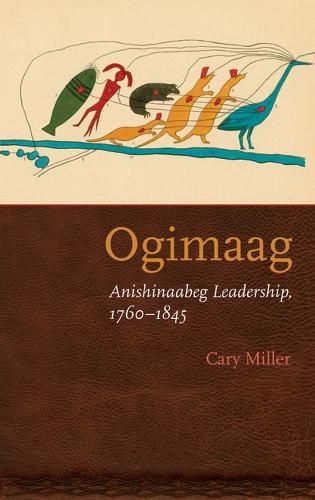Readings Newsletter
Become a Readings Member to make your shopping experience even easier.
Sign in or sign up for free!
You’re not far away from qualifying for FREE standard shipping within Australia
You’ve qualified for FREE standard shipping within Australia
The cart is loading…






Cary Miller’s Ogimaag reexamines Anishinaabeg (Ojibwe) leadership practices and processes in the late eighteenth and early nineteenth centuries. At the end of the nineteenth century, anthropologists who had studied Anishinaabeg leadership practices developed theories about human societies and cultures derived from the perceived Anishinaabeg model. Scholars believed that the Anishinaabeg represented an anthropological type of Native society characterized by weak social structures and political institutions. Miller counters those assumptions by looking at the historical record and examining how leadership was distributed and enacted long before scholars arrived on the scene. Since secular and religious power were intertwined for Anishinaabeg, Miller argues that any study of Anishinaabeg political action needs to consider both aspects of power and leadership. Miller uses research produced by Anishinaabeg themselves, American and British officials, and individuals who dealt with the Anishinaabeg, in both official and unofficial capacities.
By examining the hereditary position of leaders who served as civil authorities over land and resources and handled relations with outsiders, warriors, and the respected religious leaders of the Midewiwin society, Miller provides an important new perspective on Anishinaabeg history.
$9.00 standard shipping within Australia
FREE standard shipping within Australia for orders over $100.00
Express & International shipping calculated at checkout
Cary Miller’s Ogimaag reexamines Anishinaabeg (Ojibwe) leadership practices and processes in the late eighteenth and early nineteenth centuries. At the end of the nineteenth century, anthropologists who had studied Anishinaabeg leadership practices developed theories about human societies and cultures derived from the perceived Anishinaabeg model. Scholars believed that the Anishinaabeg represented an anthropological type of Native society characterized by weak social structures and political institutions. Miller counters those assumptions by looking at the historical record and examining how leadership was distributed and enacted long before scholars arrived on the scene. Since secular and religious power were intertwined for Anishinaabeg, Miller argues that any study of Anishinaabeg political action needs to consider both aspects of power and leadership. Miller uses research produced by Anishinaabeg themselves, American and British officials, and individuals who dealt with the Anishinaabeg, in both official and unofficial capacities.
By examining the hereditary position of leaders who served as civil authorities over land and resources and handled relations with outsiders, warriors, and the respected religious leaders of the Midewiwin society, Miller provides an important new perspective on Anishinaabeg history.